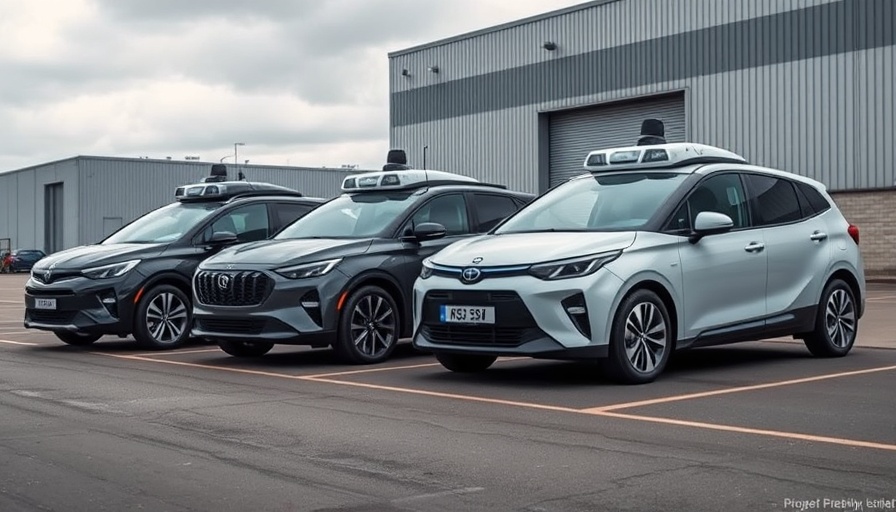
The Promise of Wayve's Approach to Autonomous Driving
Wayve, a trailblazing autonomous vehicle startup, is gaining attention for its innovative strategies in the autonomous driving technology space. Under the guidance of its co-founder and CEO, Alex Kendall, the company has developed an automated driving software that not only promises efficiency but also affordability, making it appealing to a wider range of automotive manufacturers.
What Makes Wayve Stand Out?
Unlike others in the industry, Wayve has adopted a unique end-to-end data-driven learning approach. Through a variety of sensors, including cameras, their system interprets the environment and makes real-time driving decisions without relying on outdated high-definition maps or rules-based algorithms.
Key Ingredients to Scale
Wayve's strategy hinges on being hardware agnostic, meaning their software can integrate with existing sensors most vehicles already have. This not only reduces the barriers for automotive partners but significantly cuts down on costs. As Kendall emphasizes, existing manufacturers do not need to invest heavily in new hardware, which typically acts as a deterrent for adopting new technologies.
The Importance of Advanced Driver Assistance Systems (ADAS)
Kendall sees the rollout of their advanced driver assistance systems (ADAS) as crucial for building a sustainable business model. This integration is expected to provide the company with the necessary exposure to data for refining their autonomous driving capabilities. Only with robust data can Wayve aim to reach Level 4 autonomy, where vehicles can operate independently under specific conditions.
Adopting a Different Approach to Sensors
Wayve’s pivot away from lidar—a technology widely regarded as essential in achieving high-precision mapping for autonomous driving—is notable. The company aims to scale its technology without it initially, relying primarily on camera data, similar to Tesla’s approach. However, Kendall acknowledges that they will eventually consider lidar for validation and accuracy.
Funding and Future Partnerships
Attracting over $1.3 billion in investment over recent years, Wayve sets its sights on licensing its self-driving software to notable fleet partners, including Uber. To this end, they are already in discussions with multiple Original Equipment Manufacturers (OEMs) to integrate their advanced systems into various vehicle models, showcasing their potential to create widespread impact in the autonomous vehicle industry.
Looking Ahead: The Future of Autonomous Technology
As Wayve strives for full autonomy, their vision includes creating a network of self-driving taxis through collaborating with large fleets. However, Kendall’s foresight also highlights the importance of data collection and analysis in refining their systems, ensuring they remain a step ahead in an industry moving at breakneck speed.
Insights for Aspiring Entrepreneurs
Wayve's journey offers learning points for startups and innovators in all fields. The company exemplifies the importance of having a clear strategy and understanding market needs while addressing the challenges of adopting nascent technologies. Aspiring entrepreneurs should take note of their innovative funding approaches, data utilization, and agile system adaptations. These elements are critical for successfully scaling their business.
The Road to Success in Autonomous Ventures
For those with an interest in starting their own tech startups, Wayve shows the necessity of aligning innovative ideas with practical execution. Having a business startup checklist is essential, alongside a comprehensive view of funding avenues, whether it be through government grants for small businesses or seeking strategic partnerships.
In conclusion, Wayve's focus on reducing operating costs through innovative software while ensuring versatility in hardware compatibility could indeed reshape the autonomous driving landscape. For entrepreneurs, their journey emphasizes that employing a clear vision, understanding industry requirements, and maintaining an adaptive approach are key components to building successful startups in today's tech-driven world.
 Add Row
Add Row  Add
Add 



Write A Comment